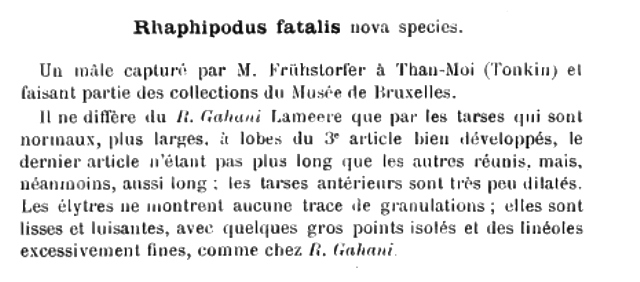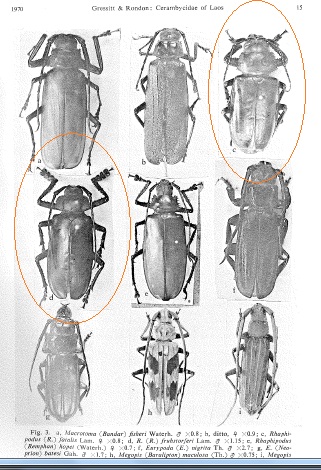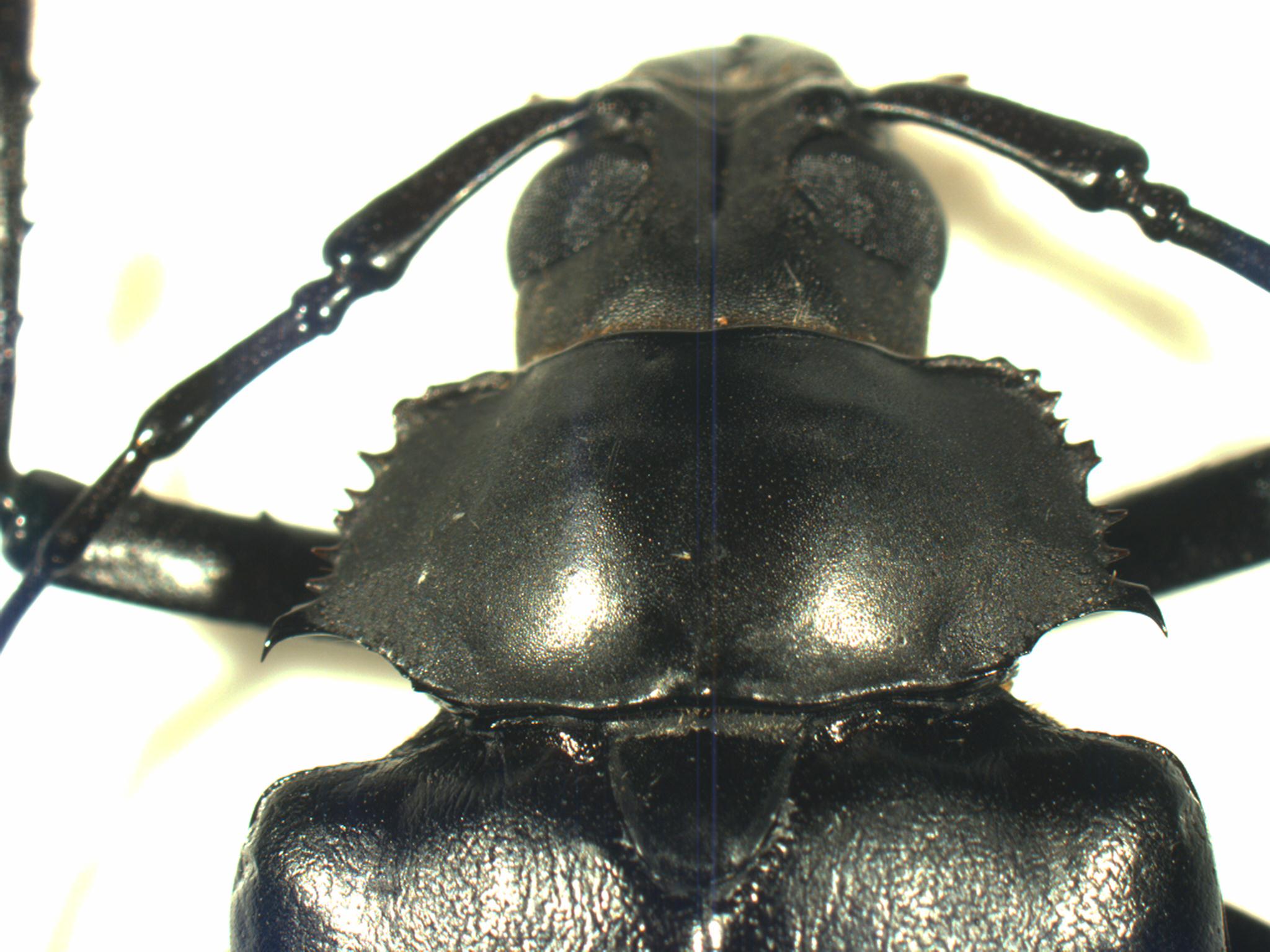| T O P I C R E V I E W |
| Pierre |
Posted - 01/03/2010 : 20:38:00

This female makes me think of Rhaphipodus wallacei.
I have these in my collection and they seem to be very similar.
I do not have any documents on this genus.
Do you agree?
|
| 9 L A T E S T R E P L I E S (Newest First) |
| Francesco |
Posted - 02/07/2011 : 07:48:28
Yes, I think it is better.
I will go just to Brussels in the next times. |
| Cuong Do |
Posted - 02/07/2011 : 01:19:52
Dear Francesco,
The surface of elytra is fit well to the description of R. fatalis: smooth and shining.
The tarsi character is clearly show that the Fig 3c in the scan is not R. fatalis. Hence what is the thing of Fig 3c?
I think that problem only be fix with photos of holotype of both species.
Best wishes,
Cuong |
| Francesco |
Posted - 01/07/2011 : 21:31:37

Well, thank you for your scan.
This is the original description of fatalis, which I translate:
"It differs from R. gahani Lam. in its tarsi, which are normal, larger, with the lobes of the 3dr joint well developed, the last joint neither longer than other ones united nor as long as; front tarsi very feebly enlarged. The elytra do not show any traces of granulation; they are smooth and shining, with some large isolated points and some extremely feeble ridges, such as R. gahani."
The presence of denticulation on the basal margin of the pronotum is not stated; however, your specimen seems to have such denticulation.
The differences concerning the tarsi are unclear; nonetheless, Gressitt's picture clearly shows a fatalis (Fig. 3c) with normal tarsi and a fruhstorferi (Fig. 3d) with enlarged tarsi, well corresponding to the description.
I think that the denticulation of the pronotum is a few important character, The differences of tarsi might only concern males, but this character seems to be present in your specimens as well!
A close picture of the elytral surface (with oblique light in order to evidence the surface) might help to identify it. |
| Cuong Do |
Posted - 01/07/2011 : 17:51:20

Dear Francesco, I still confuse about Gressitt figures, because there only 2 species of the genus in Laos also.
The Fig 3d is exactly the species of the photo that we sent before. I check some other photos from the internet of the species, it looks that the posterior margin of pronotum are quite stable (without denticulate) and clearly difference from R. fatalis as Fig. 3c. I am very confusing now... |
| Cuong Do |
Posted - 01/07/2011 : 02:55:07
Thank you so much. |
| Francesco |
Posted - 30/06/2011 : 19:17:08
I have not Gressitt's book under the eyes, but it is possible that some figures are inverted. I remember that the copy a read at Genoa's Museum had an Errata at the end.
However, R. fruhstorferi should be characterised (both male and female) by granulated elytra. |
| Cuong Do |
Posted - 29/06/2011 : 00:09:52
Sorry, the Fig 3d in Gressitt 1970 is male, R. fruhstoferi with smooth elytra and posterior margin of pronotum also not denticulate! |
| Cuong Do |
Posted - 28/06/2011 : 23:59:37

I maybe also have the same species from North Vietnam, it look the same Fig. 3 d in Gressitt et al. 1970 (also female).
Maybe the male is different... |
| Francesco |
Posted - 02/03/2010 : 11:43:00
In Vietnam only Rhaphipodus fatalis Lameere, 1912 and R. fruehstorferi Lameere, 1903 are present.
The former species has smooth elytra, the latter one granulate. Hence, I argue the former one, though your female does not perfectly correspond to the original description (of the male) in the posterior margin of the pronotum. In fact, both Indochinese Rhaphipodus species have this margin denticulate, while your female has it smooth, just as R. wallacii. |


